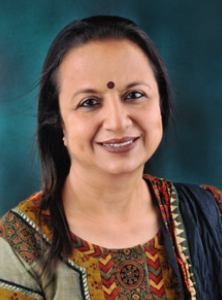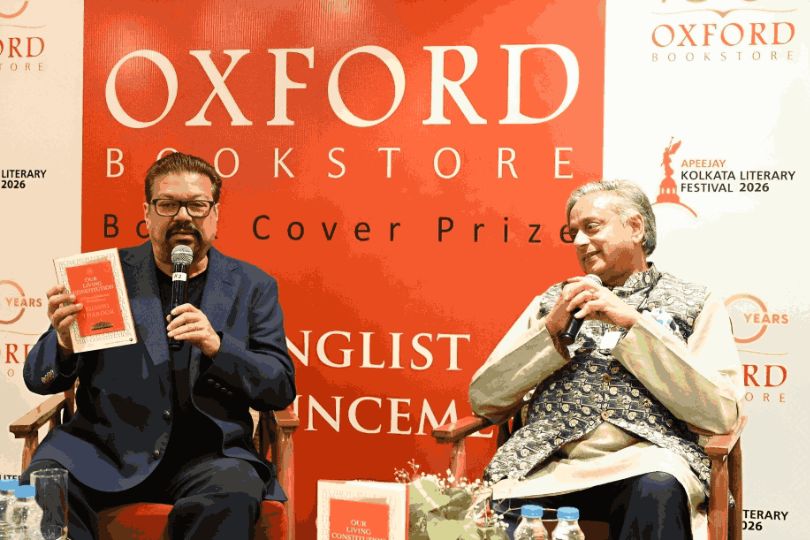Interview with Malathi Ramachandran, author of 'The Legend of Kuldhara'
on Feb 07, 2022

Malathi Ramachandran is a Masters in Mass Communication, who has had many short stories published in magazines and anthologies, two of which have won prizes in British Council short fiction contests. She is the author of four novels, The Wheel Turned (2010), Edge Of All The Light (2013), The Legend of Kuldhara (2017) and Mandu (2020) the last two titles in the genre of historical fiction,. An avid reader, amateur artist and an ardent itinerant, she has travelled widely and loves observing people of different cultures. Her plots and characters are often inspired by her rich and varied experiences. Malathi conducts creative writing workshops for adults and children under the brand name Melting Pot.
1- You conduct creative writing workshops for adults and children under
the brand name Melting Pot. Share something about it?
I was first approached by some of my readers in the community where I live, asking me if I could advise their children on developing writing skills. I realised that while our curriculum has plenty of scope for knowledge-based rote learning, there is little or no emphasis on creative thinking and expression.
I personally believe that today’s children can solve complex math problems but not simple everyday challenges; they can write a factual essay but not spin an original tale; and they are encouraged to reproduce verbatim from textbooks, instead of creating something fresh, something new. The ability to think out of the box needs to be cultivated as early as possible.
This is where my concept of creative writing workshops for children was born. Through guided mind exercises, concept generation, writing techniques and finding one’s voice, children from ages ten to sixteen are encouraged to write original essays, stories, poems and skits, then read them out to their peers.
For adults, I restrict myself to Fiction Writing workshops where we practise the process of creating a story idea, plot, characters, dialogues and title.
2- How did you get the inspiration of writing about the village of
Kuldhara?
Most of my fiction writing ideas spring from my travel experiences and my love for history and legend. The Legend of Kuldhara is based on a story that lies buried in the ruins of a village of the Rajasthan desert. When I visited this place, I was struck by the fact that this village along with eighty-three other villages of the Paliwal community had been abandoned overnight two hundred years ago. Legend says that all the Paliwal Brahmins left their homes as one to save the honour of a beautiful maiden, the chieftain’s daughter. I was fascinated by this story and wanted to imagine and explore the village life, the people, their relationships and their emotions through a work of fiction. That is how I came to write The Legend of Kuldhara.
3. The synopsis of the book is very fascinating and unique in its own
nature. How did you create this plot on the flimsy facts available to you?
If you google Kuldhara, you will get only two lines of history, no matter how much you search. Facts state that hundreds of prosperous Paliwal Brahmins abandoned their villages overnight to escape the Diwan of Jaisalmer, Saalim Singh, who wanted the chieftain’s daughter to be sent to him. That’s all. History has no answers to our questions: Where did they go? How were they never found again? What happened to the girl?
I decided to start my story where history has no more answers. So I built a plot and subplots to trace the story of the villagers, of the girl and of Saalim Singh and his private life. Even as I created characters and scenarios, I stayed true to the aura of nineteenth century Rajasthan and factually correct to the history of Jaisalmer and its rulers. This involved intensive research and a seamless blending of facts and fiction.
4- Share your favourite chapters from the book; a chapter that is very
close to your heart?
The chapter I enjoyed writing the most is the one where I introduce the folk singer of Jaisalmer. He is ‘ageless…dressed in a yellowing dhoti… shaggy grey locks lowered over his ravanhatha” He is not just a musician and balladeer, but also a clairvoyant, a soothsayer.
I brought him into the story as much to create a mystic element as to serve the role of a Greek chorus….that is, someone who comments on events, knows the past and predicts the future.
Instead of directly narrating the story of how the Paliwal Brahmins had come to be, I decided to use this literary tool instead. The folk singer tells the story and then predicts the future of the Paliwals.
Other chapters I enjoyed writing are the ones where Parvati and Pari take their destinities into their own hands, because this is about the strength of women even in the most patriarchal of times.
5- This book is historical fiction. Let us know if you are interested in
exploring other genres also?
When I first started writing fiction, I started with short stories, and then wrote my first full length fiction (The Wheel Turned) which was a love story set against the backdrop of military action in the North East in 1962. Then I tried my hand at a romantic thriller (Edge of all the Light). Meanwhile, my travels all over the country became forays into exciting remnants of the past. The historical places I visited revealed their secrets and stories and I was inspired to recreate them through my works.
Historical fiction as a genre excites me because it combines two of my passions….history and writing. When I say history, I don’t mean the dry facts and dates taught in school. History to me is the people who lived centuries back.. their clothes, their pastimes, their culture and their lives under their rulers, whether during strife or in peacetime. Monuments and ruins are not just brick and stone, they still carry the echoes of voices and laughter, music and tears.
Writing historical fiction is very satisfying and I think I will continue with this genre as long as there are stories to tell.
6- As you really like exploring places and meeting new people; would you
like to share those experiences with us?
I have been a traveller since the last twenty five years, both within the country and outside.
We have visited over a hundred destinations around the world and seen natural wonders, man made wonders and UNESCO world heritage sights, from the pyramids of Egypt to the Great Wall of China and from the Great Barrier Reef in Australia to Machu Pichu in Peru…. the list is long!
Every experience has shaped my perception of the world and my ideas of people. Meeting fellow travellers, guides, local women with children and old people, and hearing stories from the past, has shown me that no matter in which country people live, no matter in which century they lived, all human beings are the same inside. How we love, how we dream, how we emote is always the same.
This insight has helped me to write historical fiction by reaching across the centuries and reliving the lives of my characters and recreating their experiences.



.jpg)






.jpg)

.jpg)
.jpg)
.jpg)
.jpg)

.jpg)

.jpg)








Sanjay Joshi
Enjoyed. Waiting to read the book.
Pradeep Kinra
Having read all your books, it was a pleasure to see your thinking and reasoning which motivated you to write the books. Looking forward to reading your next book, whenever you finish it.